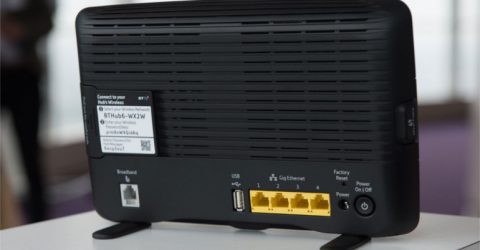The complete beginner’s guide to router channels

Your WiFi router is the ultimate ‘set and forget’ box that sits undisturbed in your home unless your internet connection stops working – but could changing router channels solve all your problems?
Did you know that there’s a way to potentially improve the internet speed and reliability on all your wireless devices – just by changing one setting?
Most people unpack a router, follow the setup instructions, and leave it completely.
But by the end of this easy to follow guide, you’ll know all about router channels and how you can use them to optimise the speed and quality of the internet connection in your home or business.
Best of all, it’s easy – and free!
What are router channels?
Also known as LAN (Local Area Network) channels, routers have a series of channels that run from 1 to at least 11, and run on different frequencies measured in GHz.
The more devices like smartphones and tablets that use the same band and channel (or overlapping “neighbouring” channels), the more the speed and quality of your broadband drops.
Similar to tuning a radio to get a better signal, you can switch between router channels to improve the quality of your WiFi.
It’s important to remember that other devices in your home that use the same frequencies can also interfere with your signal and lead to channel quality degradation. It’s not just limited to computers, tablets, and mobile phones.
How many people are on the same router channel as me?
If you can see a lot of available networks when choosing a wireless network to connect to from your device, that’s a good indicator that there are a lot of people likely to be using the same channel as you.
To dig deeper and get more accurate details along with suggestions of optimal channels, you may want to try an app such as WiFi Analyzer for Android or the Fing Network Scanner for iOS.
If you have a Mac, you can even scan WiFi channels from the Scan window of the Wireless Diagnostics pane in the menu bar.
Windows users can download the free Wi-Fi Analyzer app for PCs and mobiles direct from Microsoft.
When and why to change the default router channel
When you run into persistent (rather than one-off) problems with your broadband speed or reliability, you should look to changing the channel as your first attempt at troubleshooting the issue.
Even if you don’t notice a problem with speed or quality, checking your channel regularly means you can rest assured that you’re getting the best possible broadband service available from your provider in your area.
The apps listed above can help you quickly identify whether your channel is crowded and also confirm which channel, if any, you should switch to.
Most ISPs (Internet Service Providers) and router manufacturers will provide routers set to the same channel.
This means that there’s an increased likelihood of you using the same router channel as multiple neighbours in your vicinity, and potentially even have multiple wireless devices sharing a channel or overlapping channels within your own home.
The worst possible outcome from changing your router channel is that your broadband quality doesn’t improve – in which case you can simply try another channel until you see a better result, or change it back to the original channel if there are no better options.
How to change your router channel
The instructions for changing the channel depend on your router model and broadband provider.
If you’re a BT user, you don’t need to worry about changing your router channel. BT’s Smart Wireless feature automatically ensures you’re always set to the optimal channel.
Virgin provides instructions for changing your Virgin Media Hub channel based on your router model, as does TalkTalk.
Sky has an explanatory video and details for logging in to your router to change and view all settings.
If you live in a house share, flats, terraces, or similar, or work in close proximity to other businesses with separate Wi-Fi routers and broadband services, we recommend reviewing your router channel regularly to account for changes to other people’s WiFi and wireless devices nearby.
Still experiencing poor internet speeds even after switching router channels? It could be time to switch broadband providers instead.






